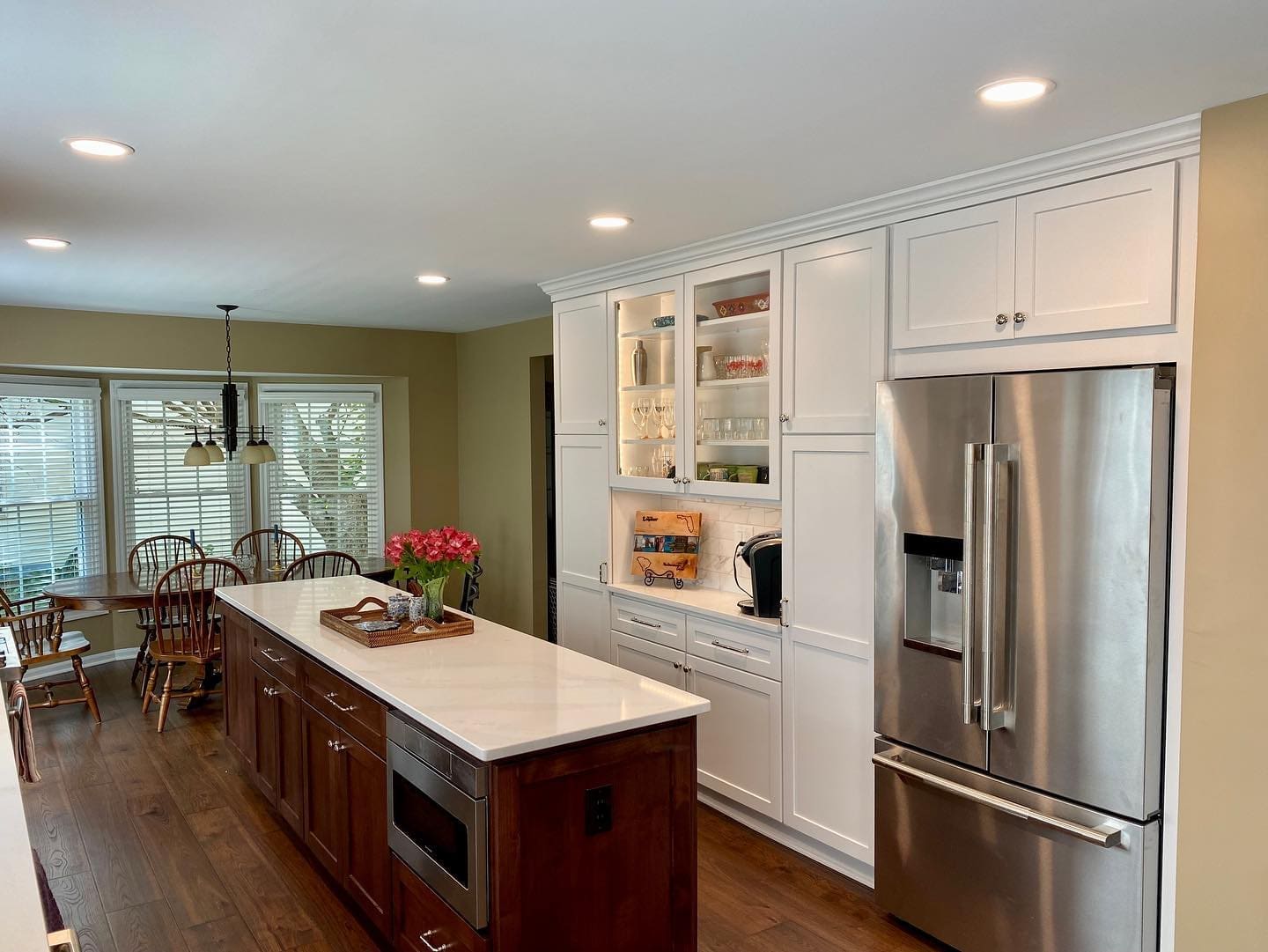 The kitchen has always been, and will always likely be, the central hub of activity and utility in home. Not only is it the room that is specifically designed to prepare all the meals, be the popular sole source for food and drink, but it is also the environment in which the family chooses to engage in most of their social activities. This may be due, in part, to the fact that people are discreetly comforted by being in the presence of the food supply; but, it could certainly be argued that this is simply the environment where humans, in general, gather and find comfort in one another.
The kitchen has always been, and will always likely be, the central hub of activity and utility in home. Not only is it the room that is specifically designed to prepare all the meals, be the popular sole source for food and drink, but it is also the environment in which the family chooses to engage in most of their social activities. This may be due, in part, to the fact that people are discreetly comforted by being in the presence of the food supply; but, it could certainly be argued that this is simply the environment where humans, in general, gather and find comfort in one another.
While it may be gleaned that these traits and behaviors have a more primal root and cause, the support of this idea is further exemplified in how a kitchen’s design is quietly transforming into a model of social and communication trends to meet contemporary lifestyles. Kitchen designers and homeowners alike are selectively choosing and creating designs, features and amenities which compliment and enable the methods by which contemporary folks gather and communicate with one another. It is truly fascinating how traditional models are now being modified to represent and reflect the trends associated with modern living and all its demands.
Kids grow up so fast!
Contemporary lifestyles of families tend to be along the lines of ‘fast and furious’. Most households, nowadays, are defined by both parents keeping jobs outside the home; and, in some cases a nanny or similar surrogate is hired to keep the children fed and safe. Whether the charge of the children is someone who is employed by the family or a parent is still at home, the modern kitchen has seen certain adaptations which are notably remarkable in function.
The primary focus of these modifications is to create an environment, for the children, which is more user-friendly for them. In creating this type of environment, the family is encouraging more independence in the children. These ‘independence generating features may include something as simple as a refrigerator with an exterior ice and water dispenser or a separate water cooler tucked in a remote corner. This encourages a child to satisfy their own demand for a quick drink of water. Modern kitchens may also boast a small, easily accessible refrigerator that is dedicated to juice boxes and refrigerated ‘kid snacks’. Microwave ovens are now being placed on modular carts or mounted in conspicuous lower cabinet areas whereby the shortest person in the home may comfortably use them.
Kitchen islands are being created that have a ‘step-down’, kid-height surface on one end so that the child can snack, do homework while exchanging the days’ events with the adult in the kitchen. Narrow cabinet bases are being utilized as end units which will accommodate the child’s need for cups, glasses or plates so again, they may find a means to serve themselves. While these features may seem that they’re designed to isolate the children or make them less dependent too quickly, the converse is probably more accurate. The child can be successful on their own, which enables their growth and independence in these routine accomplishments.
Can’t live without Communication Technologies
If you dial the clock back, some 50 years, you’ll notice that the modern, up-scale homes of that era had this really cool feature called an ‘intercom’ system; and the base station for this novel communication platform was typically located in the kitchen. It was a speaker/receiver box affixed to the wall that had as many buttons as the home had rooms; and yes, even the bathrooms were included. Within every other room of the home there was a smaller, single-button unit mounted on a wall. This permitted the family to summon or communicate with anyone in the household who wasn’t standing in the kitchen. Neat idea!
Nowadays, every family member typically has some form of cellular phone or texting device that they, no doubt, carry with them wherever they go. As a simple matter of modernization and accommodation to such contemporary communication needs, modern kitchens are often replete with WiFi connections or, at very least, a router. Kitchens are also being designed to accommodate docking stations and charging stations for ‘iPods’ and ‘Smart Phones’. Another component of such technology, which is in compliance with modern living, is voice activated-voice recognition, hands-free, phone systems which enable a kitchen dweller to call and converse with a family member or friend while still safely cutting carrots for the evening’s meal.
Newer kitchens are also integrating more confined and discreet desk areas where laptops, ‘Kindles’, and ‘iPads’ are found, enabling the chef-of-the-day to catch-up on all the latest ‘Facebook’ news while the roast is in the oven awaiting basting. It’s quite probable that in another 50 years that we’ll all be snickering at the primitive means of communications that we incorporated within our modern kitchens. Until that time, however, this is the trend to watch!





